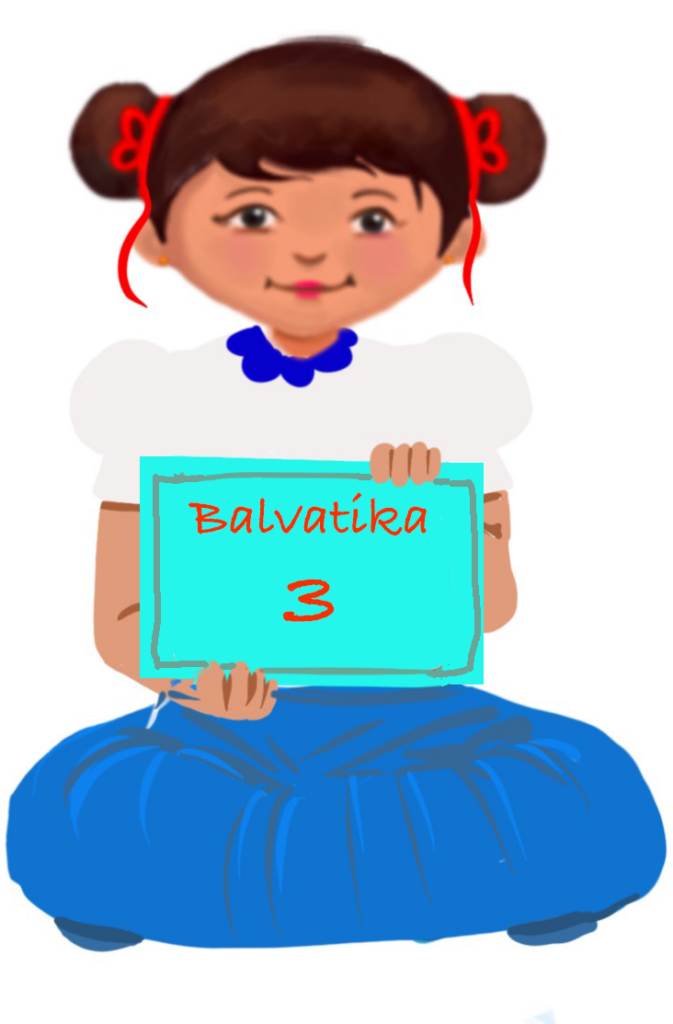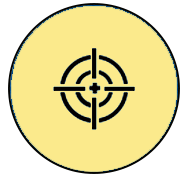
Patterns
Pattern Print
Learning Outcome
Identifies and extends simple patterns in their surroundings, shapes, and numbers.
 Objective
Objective
Children will know to identify, create and name the different patterns using colours, shapes, and different objects.
 Prerequisites
Prerequisites
Children are aware of different colours, shapes, and simple designs.
 Pre-teach Vocabulary
Pre-teach Vocabulary
Children should be familiar with the terms: colours, designs, shapes.
Introduction – Patterns
Material required:
1. Flashcards of colours, Red, Green and Blue, three each.
2. Blocks of different colours and different shapes.
Flashcards: Patterns
Introduction to Patterns
- The teacher could begin by showing flash cards of different colours. Now she will arrange the flashcards like Red, Green, and Blue and then repeat the red, green, and blue coloured flash cards. She will explain this is what is called as a pattern.
- The teacher can show some more patterns using the colour cards.
- The teacher shows patterns with shapes. For example, square, triangle, square, triangle.
- Patterns using blocks can be shown to children.
- The teacher can include the listening activity. For example She will clap in different ways as one, two, three / one two, one two, one two/ one two three, one two three/ one two three. She explains the three different patterns of clapping.
- Using musical instruments to show patterns. For example- short and long music.
Refer to ‘Sequencing skills’ Adaptations and Strategies given in the Main page of ‘Patterns’ if there are any neuro-diverse children in the class.
Video: Introduction to patterns
ISL Video: Introduction to patterns
Activity 1: Creating a Pattern from Leaves
Objective:
To create a pattern using leaves of different shapes.
Importance of the activity for children:
Helps in developing:
- Fine motor skills (picking the leaves, Hand-eye coordination).
- Gross motor skills (bend, pick and place the leaves on the floor).
- Cognitive skills (arranging in a correct pattern, logical thinking, Concentration).
- Social skills (Cooperation, waiting for the turn, playing together).
- Vocabulary skills (concepts like pattern, pattern formation).
- Emotional skills (sense of achievement on completion builds self-esteem).
Resources required:
Mango leaves, Betel leaves, Banyan leaves (Or any three different types of leaves)
Setting for the activity:
The activity can be done indoors or outdoors depending on the space availability.
Type of activity: Individual activity
Preparation of activity:
Make sure that enough leaves are available to the children.
Role of the teacher: Demonstrator, facilitator, and observer.
Procedure:
- The teacher first draws the leaves pattern on the black board / white board. For example, she can draw a Banyan leaf in the first place, a mango leaf in the second place, and a betel leaf in the third place.
- Then the teacher will ask the children to create patterns by placing them on the floor in the same order and repeating the same order three times continuously.
- Three more patterns with leaves will be shown by the teacher.
Observation:
The students are made to observe how the pattern is created using different leaves.
Suggested variation in the activity:
1. The teacher can incorporate visuals and props to make the lesson more engaging.
2. Keep the atmosphere light and fun-filled to encourage active participation.
Conclusion:
Children would be able to create different patterns.
Refer to ‘Fine motor skills’ Adaptations and Strategies given in the Main page of ‘Patterns’ if there are any neuro-diverse children in the class.
Refer to ‘Organisational skills’ Adaptations and Strategies given in the Main page of ‘Patterns’ if there are any neuro-diverse children in the class.
Video: Creating a pattern from leaves
ISL Video: Creating a pattern from leaves
Activity 2: Create patterns and name them
Objective:
To create and name the pattern using the given materials
Importance of the activity for children:
Helps in developing:
- Fine motor skills (picking, holding, and placing the circles)
- Cognitive skills (Placing the circle in the correct order, logical thinking)
- Social skills (cooperation, waiting for their turn)
- Emotional skills (sense of achievement on completion builds self-esteem)
Resources required:
1. An A4 sheet where the circles are printed
2. Small circular cuttings in different colours of the same size as printed in A4 sheet.
Worksheet: Create patterns and name them
Worksheet: Create patterns and name them (Enlarged)
Setting for the activity:
The activity can be done indoors or outdoors depending on the availability of space.
Type of activity: Individual activity
Preparation of activity:
The teacher will keep the paper cuttings of circles and the A4 sheet with the shape of circles printed ready for all the students.
Role of the teacher: Demonstrator, facilitator, and observer.
Procedure:
- Each child is given a printed A4 sheet with circles drawn in a horizontal line.
- The teacher will show in her sheet two colour cutouts stuck on the blank circles on her sheet.
- For example red and blue and name them as RB pattern.
- Then she will ask the students to complete this pattern in their worksheet.
- Similarly another pattern of red, blue and green will be shown and the teacher will name the pattern as RBG pattern.
- The teacher can use different names such as RRBB pattern or RBR pattern and ask the students to complete them in their sheet.
Observation:
The students are made to observe the result of the activity as follows:
- The students will see the difference in RB and RBG patterns.
- The teacher may write her observations for the feedback.
Suggested variation in the activity:
The teacher could provide playdough and tell them to make different shapes and create a pattern using them.
Conclusion:
Children would learn to create and name patterns in different ways.
Refer to ‘Visuospatial skills’ Adaptations and Strategies given in the Main page of ‘Patterns’ if there are any neuro-diverse children in the class.
Video: Create pattern and name them
ISL Video: Create pattern and name them
Assessment:
The teacher can give the assessment worksheet at the end. Complete the pattern.
Practice Worksheet: Complete the patterns
Practice Worksheet: Complete the patterns (Enlarged)
Assessment Worksheet: Complete the patterns
Assessment Worksheet: Complete the patterns (Enlarged)
Home Activity:
Objective:
To reinforce the concept of ‘Patterns’ through an online fun activity – Word wall.
Fun Activity: Quiz – Pattern with shapes

Cross-Curricular Connection:
- In Physical education class:
Make the children play in an order as shown below:- Clap, stomp/ clap, stomp/ stomp, stomp
- Run, skip /run, skip / run, skip
- Skip, skip, run / skip, skip, run / skip, skip, run
- Run, run / run skip / run, run / run, skip / run, run /run, skip
- In Art class:
Creating shapes and making a pattern can be done using clay.
Check list for teacher:
| Activity | Yes | No | Sometimes |
| Children can: | |||
| Identify the patterns | |||
| Create a pattern | |||
| Name the pattern | |||
| Complete the activity in the given time | |||
| Do the activity independently | |||
| Express verbally and through actions, expressions or gestures |
Teacher Resource Document
| Source and Attribution of images: All images used in the above Assets and Aids are originally created. |
| This digital material has been developed by the Sri Sathya Sai Vidya Vahini Inclusive Education Project, a unit of Sri Sathya Sai Central Trust, Prasanthi Nilayam, as a collaborative offering in the service of our nation. |